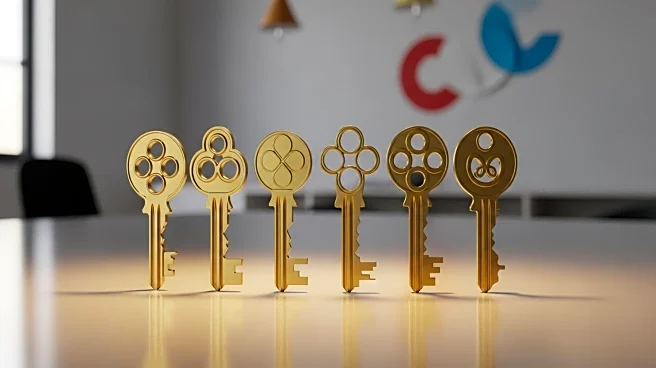What is the story about?
What's Happening?
At the Marie Claire Power Play summit, industry leaders such as Katie Kime and Hillary Kerr discussed the growing concern of executive burnout and its impact on business strategy. Kime emphasized the importance of protecting personal time by scheduling daily 'creative' periods, while Kerr highlighted the need for setting boundaries around after-hours communications. These discussions underscore the critical need for executives to manage their energy levels effectively to maintain strategic focus and organizational performance. Despite increasing investments in employee wellness, the well-being of C-Suite leaders often remains overlooked, leading to potential strategic weaknesses within companies.
Why It's Important?
Executive burnout poses a significant risk to business strategy and organizational health. When leaders are mentally and physically depleted, they tend to default to short-term fixes, stunting innovation and slowing company momentum. This not only affects the leaders themselves but reverberates through every layer of the business, impacting long-term thinking and risk-taking. As 70% of C-Suite leaders consider quitting for roles that better support their well-being, it becomes imperative for organizations to prioritize executive vitality as a strategic asset. By doing so, companies can ensure clarity, innovation, and a positive cultural tone throughout the organization.
What's Next?
Organizations are encouraged to make executive energy a boardroom topic, integrating coaching and recovery strategies into leadership development. Annual planning sessions should include assessments of leadership capacity alongside pipeline forecasts and talent metrics. By prioritizing executive well-being, companies can foster a competitive advantage and create an environment where high performance and personal sustainability coexist. This shift in focus can lead to healthier, more energized executives who are better equipped to drive business success.
Beyond the Headlines
The discussion around executive burnout highlights the need for a cultural shift in how leadership roles are perceived. The myth of invulnerability among leaders often leads to unsustainable work practices, which can be detrimental to both personal and organizational health. By adopting strategies similar to those used by elite athletes, such as energy management and mental conditioning, executives can enhance their resilience and effectiveness. This approach not only benefits the leaders but also sets a precedent for a healthier work culture across the organization.
AI Generated Content
Do you find this article useful?













